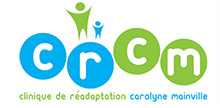Adele Faber and Elaine Mazlish (www.fabermazlish.com) developed an educational method that has been proven in places all over the world: “Talk and children will listen, listen and children will talk.” Here is an overview of the proposed approach by these authors.
Difficult Emotions
Louis, age 4, is very disappointed that his cousins can’t come and play with him as planned. As a parent, our reaction is often to reason with the child: “It’s not so bad, stop being so childish!”. Emily, age 3, is afraid to use the slide at the park. “C’mon, you have no reason to be afraid!” is what you might say. Armed with good intentions, we believe we’re doing the best to dispel the difficult emotions of our child. Yet, even if this sometimes works, this technique denies the emotions the child is experiencing. We communicate to the child that he has no reason to feel the way he does and prevent the taming of difficult emotions, an important skill to have in life. The child may also feel ashamed of feeling the way he does. Feeling misunderstood, there is often an intensification of behaviors demonstrated in other ways, which are often inadequate, to show he is upset. As a parent, how you react then?
Welcome Emotions
The method of Aber and Mazlish is based on the principle that all emotions are acceptable, but not all behaviors. So no matter what the child experiences or feels, it is recommended that the parent simply listens with interest. One can also say things like, “Oh! Hmm … I see!” These words and attitude are so simple yet carry a vital message for children: I’m listening. After listening attentively to the child, the parent can also name the emotion to help the child identify his feelings: “I feel that you are very disappointed! Waiting for your cousins all morning took a lot of patience! “.
When possible, use imagination which communicates understanding to the child. Juliette, age 2, would love to eat her favorite cereal this morning, but there’s no more. Rather than respond negatively, her mother might say, “If I had a magic wand, I’d make a mountain of cereal appear for you! Wouldn’t that be nice, eh? “
These communication techniques help children overcome difficult emotions. They calm down more easily and become more open to cooperation afterwards because they feel understood and accepted in what they’ve experienced.



Leave A Comment